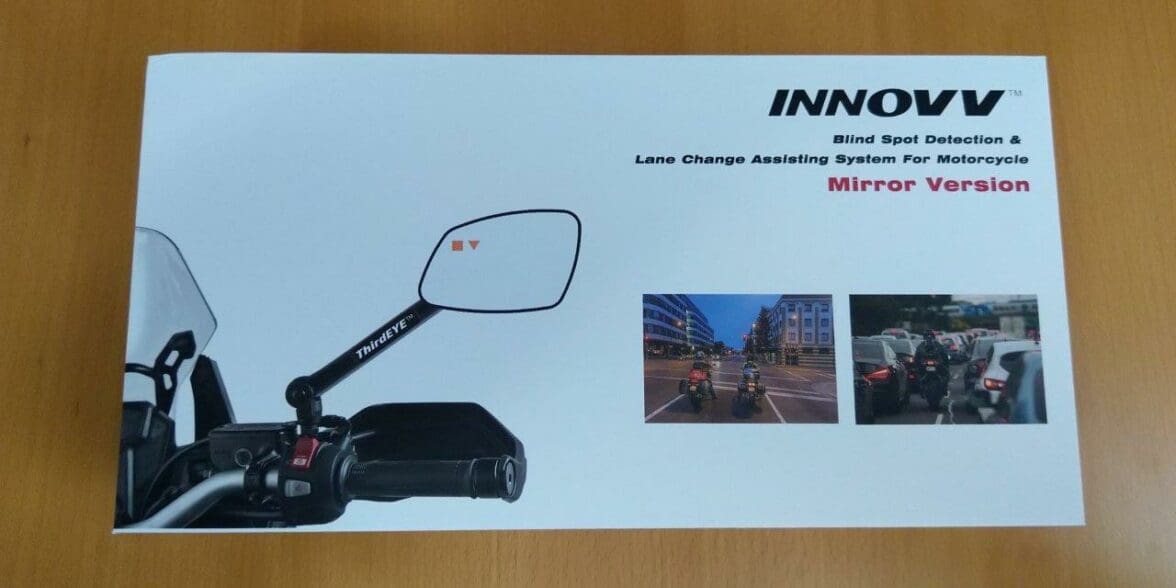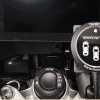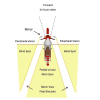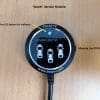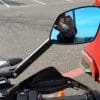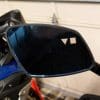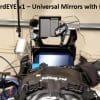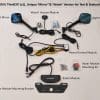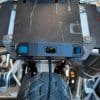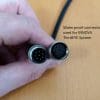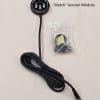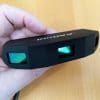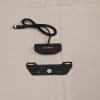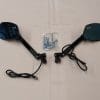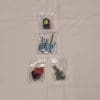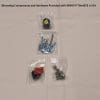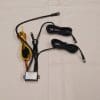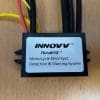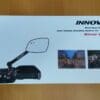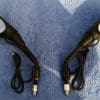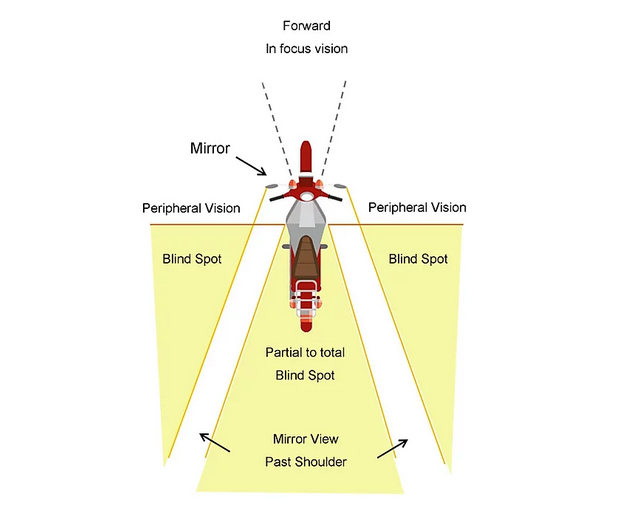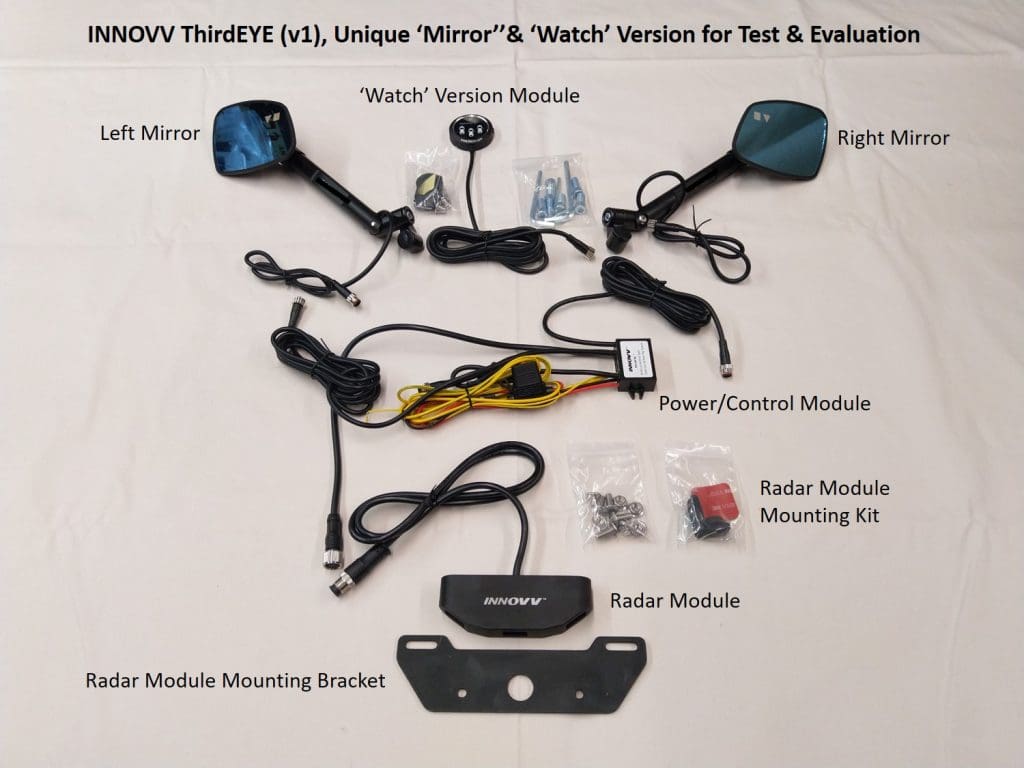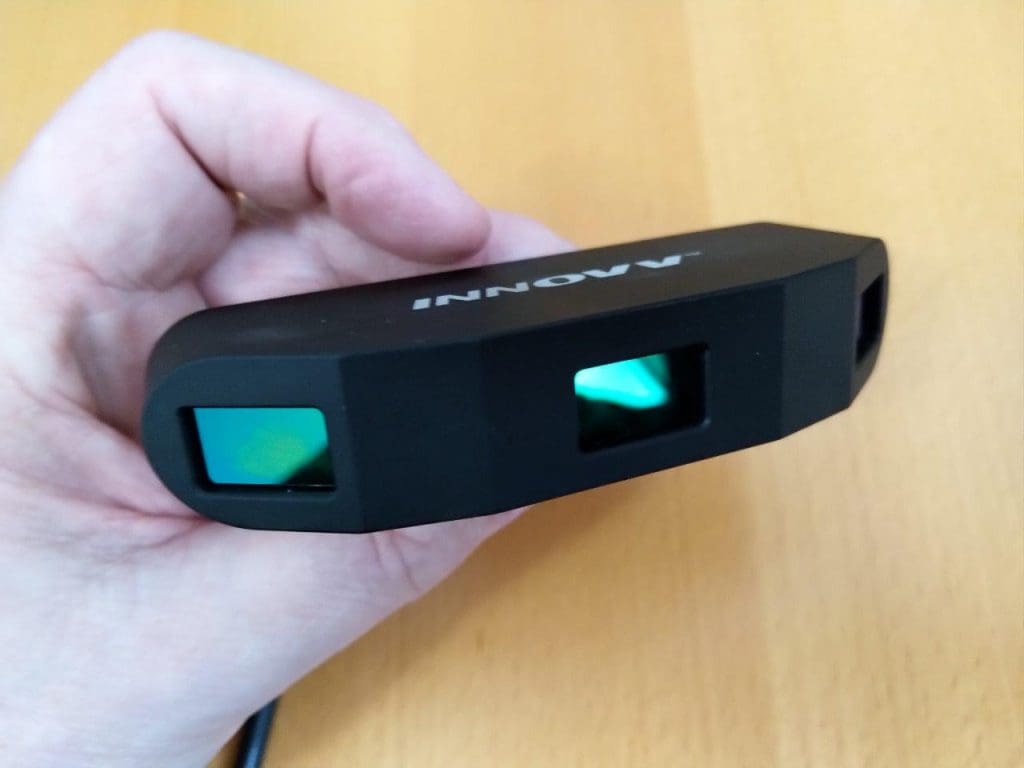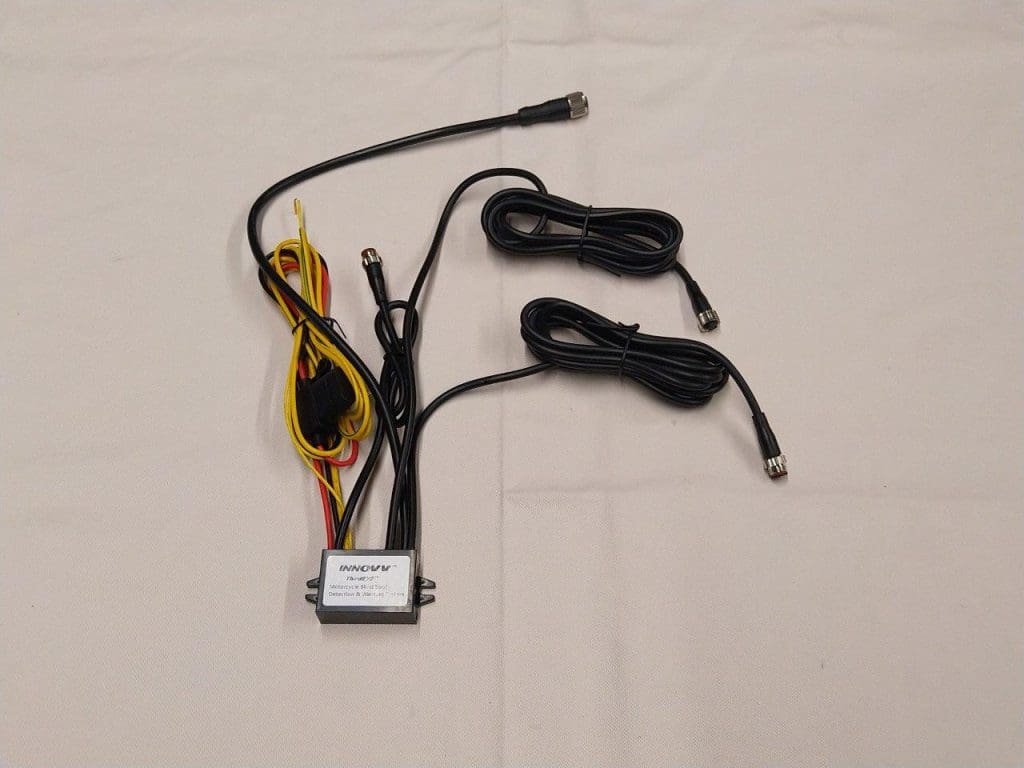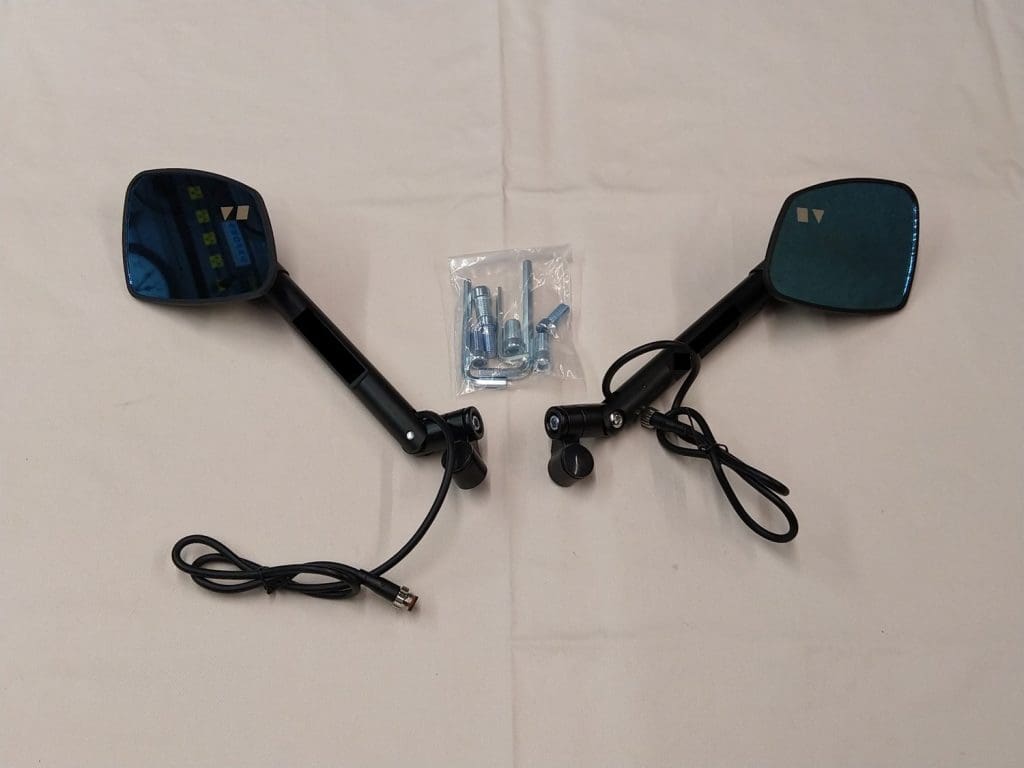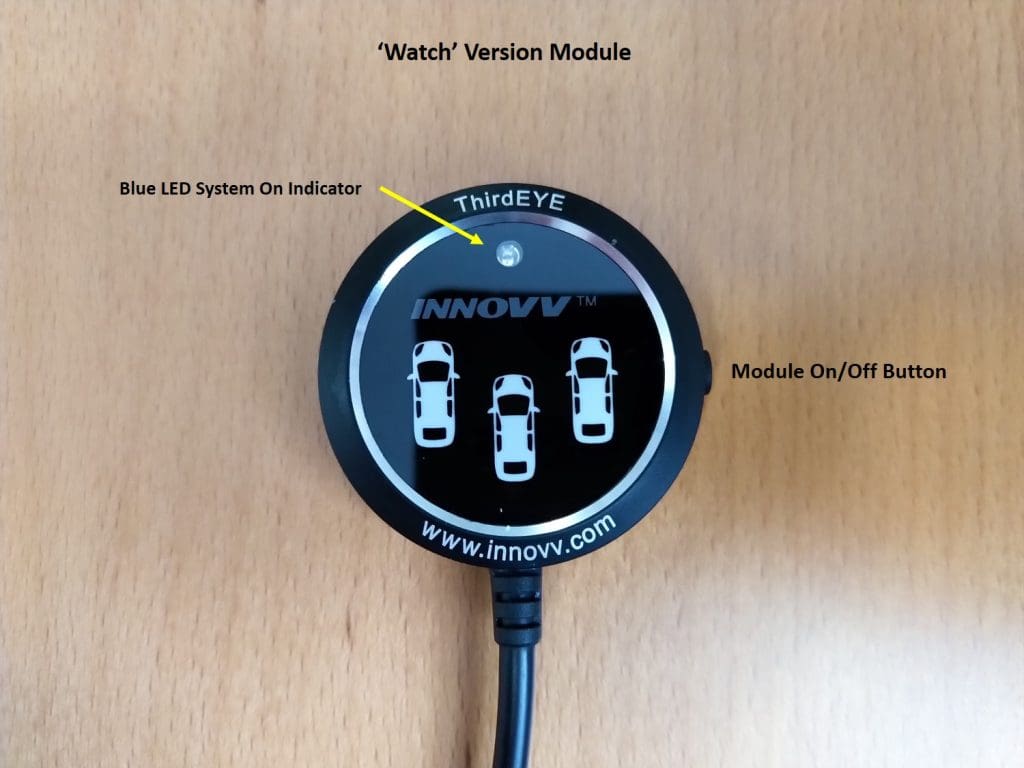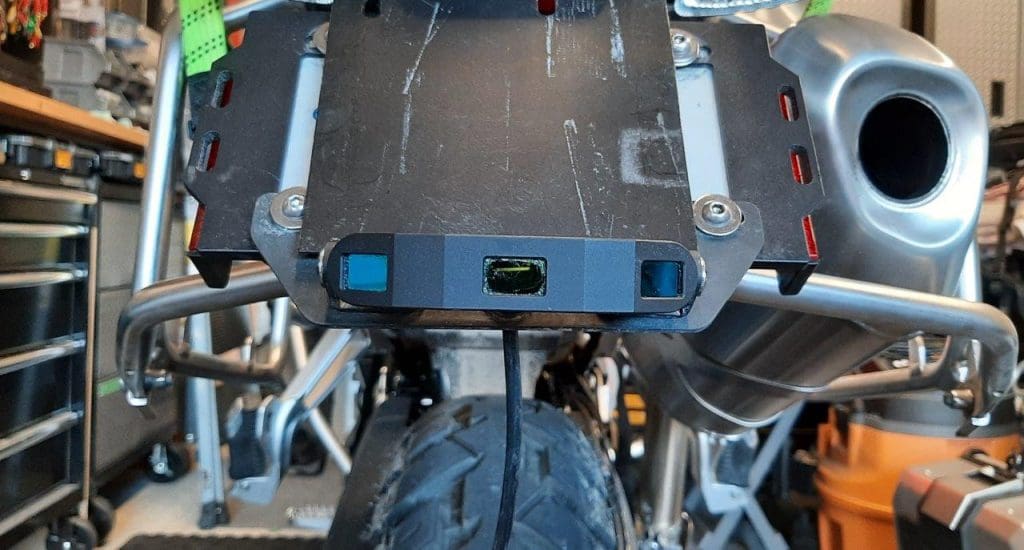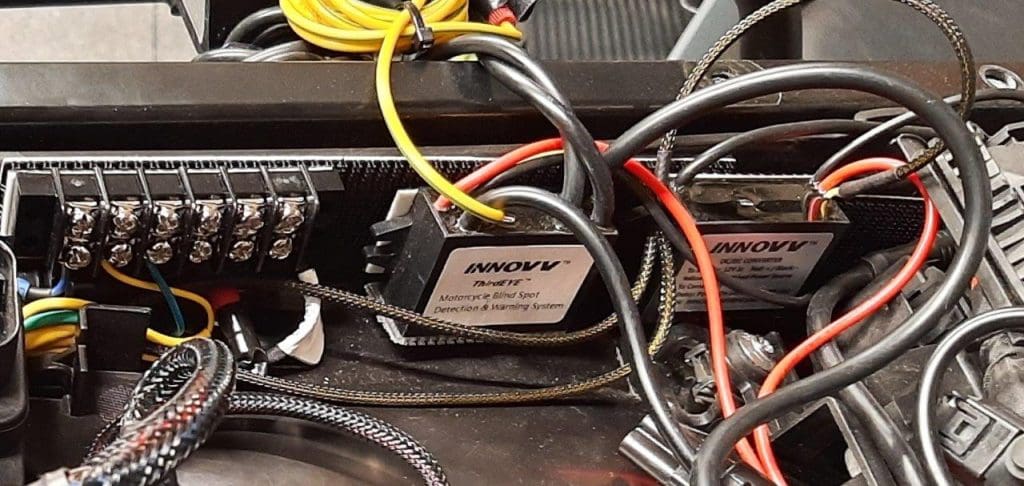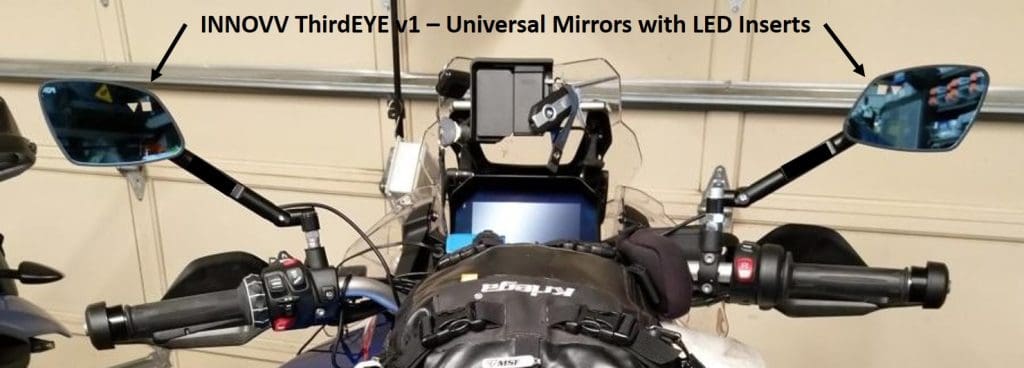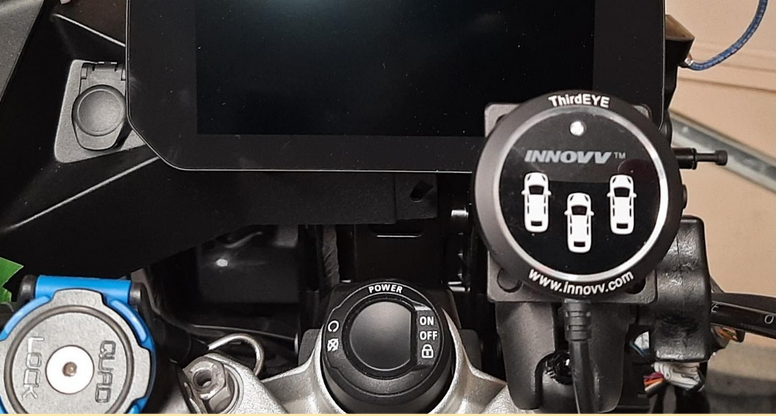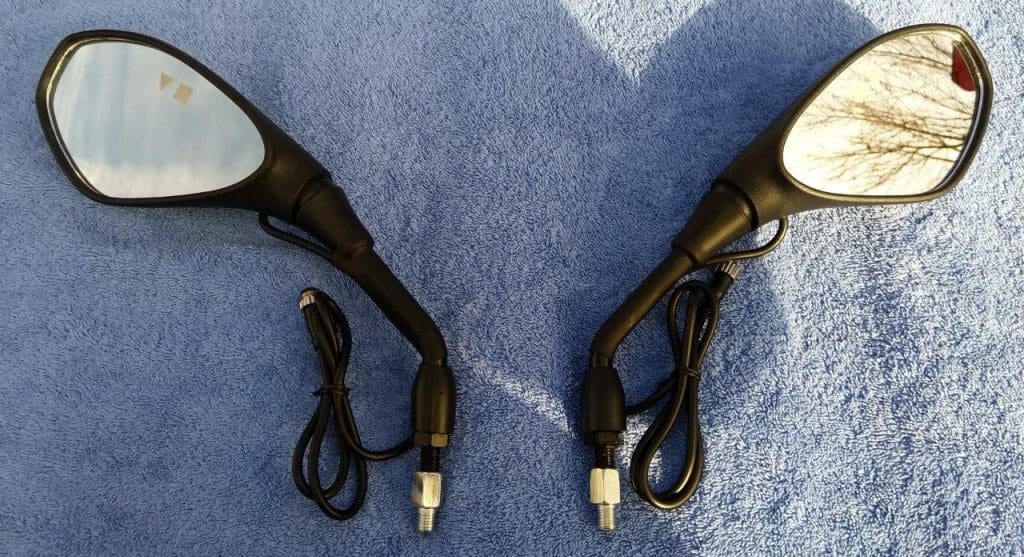So here we are, in another year and as we look back at 2020 and forward to 2021 one thing is certain – our COVID-19 pandemic world is still with us. But there is more than a modicum of hope that vaccines, continued vigilance and the unrelenting efforts of our health care systems and providers will prevail and I for one thank everyone involved. There is still much uncertainty going forward but optimism is a must.
There is no denying that motorcycling has been and remains impacted by the pandemic, positively and negatively. And while so many large, and small group activities, from mainstream industry shows, manufacturer reveals, demo days and group functions have either been cancelled or severely curtailed, the industry and the riding community have adapted.
Much of this adaptation involves the accelerated use of digital multi-media presentation forums and platforms and of course, social media. We may or may not get back to the once enjoyed physical interaction aspect of shows, demo days, etc., but for now, it seems we are coping in a digital sense.
And this form of coping is likely to become reality or the norm, with many industry entities moving from hosting or participating in the physical venue activities, to online or virtual-based activities – in whole or in part.
There is also no denying that motorcycling remains a popular activity – a look at world-wide market figures and industry initiatives tells that tale. And whether for leisure, work, or any combination in between, our COVID-19 world has resulted in a surge or resurgence of the larger powersport market and particularly, the motorcycling segment.
And this surge or resurgence, along with time, technology, and imposed or voluntary time-outs are adding impetus to or industry focus of safety technologies and features that have long been available to the automotive market but seldom seen as near-term objectives for the motorcycling community.
One of these focus areas addresses situational awareness – you know that thing we all need to have to help keep us safe and sound on the road and the rubber-side down. Our current situational awareness environment is largely based on data from human embedded sensors like sight, sound and smell, that once processed provides cognizance or awareness.
But as the automotive industry discovered years ago, adding onboard sensor systems and exploiting their capabilities can and does significantly enhance situational awareness and thus safety.
Over the last two to three years these capabilities have indeed become more of a focus within the motorcycling industry with manufacturers adding related features or announcing initiatives for future development; all good.
An early example, available on some new motorcycles, is Adaptive Cruise Control or ACC – a stand-alone short to mid-range radar-based capability that is integrated with other onboard multi-axis multi-sensor components to provide following, overtaking and assisted stopping features, along with the familiar cruise-control management functions.
And although there is no replacement (yet) for the Mark I human sensors, these technology-based solutions to augment the human-in-the-loop, like the radar-based Bosch Advanced Rider Assistance Systems are a good thing.
Motorcycles and motorcyclists need to be equal and active participants regarding road use and road safety with situational awareness being key; having the right tools along for the ride is never a bad thing.
Other sensor related initiatives, some long-term, from small-scale private or crowd-funded initiatives are now available or coming to market, such as Smart Helmets discussed by Wade Thiel, including the Forcite MK1 Smart Helmet (a pending wBW review by Jim P) along with other third party universal-mount passive and active safety-related accessories.
And one of these third-party universal-mount solutions is the INNOVV ThirdEYE Blind Spot Detection (BSD) and Lane Change Assist system for motorcycles now available in Version 1 form. Now undergoing further development, this fully functional early version system succinctly shows how valuable this safety and situational awareness accessory is to motorcycling.
INNOVV and the ThirdEYE Concept
INNOVV is all about innovation and safety, with technology providing products that enhance powersport activities especially those related to motorcycling; their small, focused product line reflects these objectives.
The current INNOVV product line is comprised of the versatile and portable C5 Camera System and C5 Helmet Cam systems, the popular dual channel K2 MotoCam and the new K5 4K & 1080P Camera System, along with the small Power Hub 2 accessory power product; and more products, including the new K3, are one the way for 2021.
“ThirdEYE provides the rider with blind spot information while not sacrificing rider focus or requiring physical movement. Furthermore, providing the motorcyclist with ore awareness of their surroundings will help them make faster decisions and situation themselves more defensively on the road.” (INNOVV ThirdEYE posting)
The ThirdEYE concept with component options was presented to the North American market at the 2019 AIMExpo that was covered by an intrepid wBW team of Cameron, Jim, and Wade. Subsequent emails to and from INNOVV reps and show attendees revealed that the ThirdEYE had been well received with valuable feedback provided to help define and refine the way ahead.
wBW was offered a pre-release or Version 1 kit in early 2020 – something new to help cope with winter cabin fever. This pre-release or version 1 system consists of a Radar module housing three radar sensors for left, centre and right coverage, a set of ThirdEYE mirrors with embedded LEDs, a single ‘Watch’ display and a Control Module.
The whole system is simple, robust and functional. And this specific system is unique in having the connections and components needed for both the (planned) Mirror and Watch versions to facilitate testing and evaluation.
Since receiving this initial kit, a set of ThirdEYE enhanced BMW-style mirrors and mounting adapters followed in mid-March. And over the course of almost a year this first version ThirdEYE has seen extensive bench testing and real-world evaluation on three motorcycles during a riding season that ended up being anything but normal.
The whole opportunity, including the ability to interact with the INNOVV team regarding build, feature and function observations continues to validate just how valuable the ThirdEYE system is and the importance INNOVV places on bringing this capability to market.
Version 1 of the INNOVV ThirdEYE
The old and wise adage, “See and Be Seen” is well appreciated by INNOVV and the ThirdEYE Blind Spot Detection & Lane Change Assist for Motorcycles specifically builds upon and reinforces the ‘See’ aspect of the adage; an adage that never grows old and one that should never be forgotten.
And another thing never to be forgotten – shoulder checks. Mirrors are essential and using them is essential; but they do not eliminate the blind spots within the rear-facing left, centre and right arcs.
Addressing this issue is one of the ThirdEYE’s primary objectives – to provide a visual warning for the mitigation or elimination of blind spot issue.
So, what does the ThirdEYE provide? Well, the ThirdEYE has multiple objectives. First and foremost, it is a blind spot detection aid or tool that both augments real-time shoulder checks and ongoing use of the mirrors while adding another building block to the ongoing dynamic situational awareness picture.
To do this, the ThirdEYE system has three radar sensors (in the Radar module) positioned for left, centre, and right coverage for a 70-degree rear-facing field of view with a depth of 10m or 33ft.
So how does the ThirdEYE present what is going on behind the rider? By providing real-time visually communicative outputs from left and right mirror LED sets for the Mirror Version or, a three LED (left, centre, right) display used on the Watch Version.
When the sensors detect an object or objects (fixed or moving) within the coverage area and depending on where it is assessed that the object is the respective mirror or watch component LEDs light up in a rapid flashing or LED-sequenced manner as a visual warning to the rider; this is no different than most of the systems installed on other larger road vehicles.
When an object (vehicle) moves up from behind and into centre radar coverage, the square LEDs on the mirrors light up RED and flash rapidly. If this or other vehicles come up and move into the left or right radar coverage, the left or right triangle LED lights up and flashes rapidly.
If using the Watch Version, the left, centre or right icons light up and flash based on the two scenarios described above (directly behind or left/right approaches).
The secondary objective is to reduce risks during lane change activities.
For example: in a multi-lane environment, if the motorcyclist changes lanes and passes to the left of a vehicle the RIGHT mirror Triangle LED flashes as the motorcyclist overtakes and moves ahead of the vehicle (respective to the lanes).
And if the rider then pulls ahead and moves back into the travel lane, the Square LEDs on both mirrors flash Red in sequence (based on given centre radar coverage and output described earlier).
This serves two distinct but related functions – to identify and confirm the presence of vehicle/vehicles in the left lane during overtaking/passing and to raise awareness of the blind spot areas as the motorcyclist moves ahead and then back into the original travel lane.
The ThirdEYE does indeed work in a similar manner to most Blind Spot Detection and Vehicle/Object Proximity warning systems found on virtually all new automobiles and trucks.
Version 1 of the INNOVV ThirdEYE is a starting point and very much a ‘product’; one that is pointed in the right direction and INNOVV is taking everything learned from this version, along with lots of input from current users and testers, and moving on to the next.
Relatedly, motorcycle manufacturers are accelerating implementation regarding this type of system by resourcing corporate capabilities, forming collaborative partnerships or adopting third-party solutions, all with the objective of putting technologies, features and capabilities in to or on to their products.
But in the near to mid-term, availability of these features and capabilities will be limited to brands, models and option packages whereas the ThirdEYE system is and will be installable on virtually any motorcycle.
ThirdEYE (v1) Features & Specifications
ThirdEYE Features
- Three rear-facing (left, centre and right) radars provide a 70-degree field of view
- Detection distance of the radar is 10m or 32.8ft
- Visual warnings are provided for following, left and right lane traffic for mitigation of following and left/right blind spot issues
- Lane Change warnings are also provided through left and right display sequencing
- Ruggedized sealed cables with modular waterproof, colour-coded & keyed connectors
- Radar Module easily mounted to the back of motorcycles (lower fender/license plate frame)
- Control Module is small, sealed hub with integrated input and output connections
- Mirror Version – left and right universal fit mirrors with two LED outputs (square & triangle) for effective direct/peripheral viewing by the rider
- Watch Version – single round ‘heads-up’ module with Left, Centre, and Right indicators and ability to be mounted for best viewing by the motorcyclist
ThirdEYE Specifications
- Input Voltage: 9 to 13V, Maximum 16V
- Operating Current: minimum 220mA, typical 230mA, maximum 240mA
- Working Temperature: -20C to +60C (4F to 140F) typical is 30C (86F)
- Standby Current: minimum/typical 1.5uA/1.5uA, maximum 2uA
- Waterproof Rating: Control and Radar module are IP67, the Watch component is IP65
- Detection Range: minimum 0.05M (1.64ft), maximum 10M (32.8ft) plus/minus 0.5M (actual range and coverage is a bit more with this pre-release version)
ThirdEYE (v1) Components & Function
Radar Box/Module
The sensor side of the system is a distinctively shaped sealed module fitted to the back of the motorcycle, typically the lower license plate frame or fender area using an aluminum plate and L-shaped adapter brackets; some of the mounting kit pieces have or are being modified for the release version.
The beveled rear-face of the module with its angled sides house the left, centre and right sensor pieces and this layout provide the 70-degree overall coverage. The module is mounted in a horizontal position and ideally at a height of between 50 to 70cm (19.68in to 27.55in) above the ground to minimize or prevent false positives from ground reflections.
A long connection cable with waterproof connector (M) exits the back or motorcycle side of the module. This first version module does not have the same waterproof seal with strain relief as the other components have, but some liquid tape addressed this issue and subsequent version components are not likely to have this weak point.
Control Box/Module
This is the connectivity hub for the system. The module is the standard housing used by INNOVV for camera and Power Hub 2 systems but unique regarding internal components and external connections for the ThirdEYE; as such the module is ‘busy’ with multiple inputs and outputs, although everything is clearly identifiable and well-marked for connection purposes.
The individual Red (with in-line 5A fuse) and Black set for the (main) battery (power) connectivity and the Yellow ACC or switched (SW) ignition-on wire are grouped together. A third Yellow/Green wire provided for a future purpose is not used.
The two longest flying leads on the module are for the Left and Right Mirror connections with a shorter lead and larger connector being the Radar Module connection. On this one-off system there is an addition short flying lead for the Watch Module connection.
ThirdEYE Mirror Version
This is one of the two planned options and features custom designed universal mount mirrors with two embedded LEDs (warning triangle and square shaped) in the inner upper corners.
Functionally, both the left and right square outputs light up when a vehicle approaches from directly behind the motorcycle at or within the 10m (33ft) detection range. Output from the triangle display is side specific – lighting up on the left and/or right mirrors when a vehicle approaches from the left and/or right flank of the motorcycle.
The shaped displays in each mirror are well-placed and output is bright enough to be visually discerned by the rider, no matter if they are (perhaps) focused on the frontal field of view or the broader frontal sweep – an action and continuing process that provides the changing ‘views’ with varying depth perspectives to avoid rider ‘fixation’ and a loss of awareness.
A set of universal mount multi-joint mirrors with 10mm threaded bases, along with 8 to 10mm adapters were included with this one-off first version kit, but some adaptation was still needed for use on the left and right threaded mirror adapter mounts that BMW uses…but they got put on and used.
This type of mirror provides a good view and has great versatility and adjustability, but the combination of multiple joints and poor hardware had the mirrors suffering from even mild vibration, necessitating hardware tightening every couple of days – another observation fed back to the INNOVV team.
A second set of ThirdEYE prepared mirrors in the familiar BMW style provided as a follow-on package were much appreciated, although the included left and right-hand adaptation hardware was not a matchup for the BMW mirror adapters; but emails with photos and technical information had this issue addressed by the INNOVV team in short order.
ThirdEYE Watch Version
The simplest option is the Watch Version and when the single round module is mounted in an optimal viewing location, it is the preferred visual display over the longer term with the detection and warning outputs provided from three backlit symbols in a left, centre and right grouping on the distinctive face of the large (50mm or 2in) watch component.
This piece also has a bright Blue power LED at the top of the face and an On or Off button on the outer case at the 3 o’clock position. The bright Blue LED got toned down a bit with a piece of opaque tape.
With its adhesive backing and long connection lead the Watch module is mountable almost anywhere – high, low, left or right, for optimal single point viewing by the rider. Positioning it in or around the same viewing line as the TFT display or in a heads-up positioning next to the Navigator VI cradle worked best.
Output from the three distinctive backlit symbols on the large face is readily discernable even on bright days. Depending on whether a vehicle is approaching from the left flank, directly behind, or right flank, the respective Left, Centre, or Right LED light up whenever the object moves into or is in the 10m and 70-degree coverage zone.
ThirdEYE (v1) Installation Notes
As identified earlier, the INNOVV ThirdEYE is designed and built to be a universal-mount product that will go on virtually any motorcycle. And thanks to its design, components and connectivity, installing it on all three hosts proved to be an easy task.
The ThirdEYE User Manual is the usual large double-sided fold-out from INNOVV with lots of diagrams and text boxes and attention to detail. It works, although multi-layer diagrams and small-font text can sometimes be hard to discern. Thankfully, the PDF version allows scaling of the respective sections providing visual clarity to make sure nothing is overlooked.
The Radar Module needs stable mounting and proper orientation for optimal system performance. It needs to be mounted horizontally at a height of 50 to 70cm or 19.7 to 27.5in above the ground for optimal coverage and to minimize false (scatter) readings.
Admittedly this requirement can be an issue on some motorcycles particularly those with tall frames, lots of ground clearance and (often) larger diameter wheel sets; many of which have higher rear fenders rather than drop-down fenders.
On the tall BMW F 850 GS Adventure, fitting the ThirdEYE Radar module to its bracket that is then mounted to the drop-down portion of the Ohmics license plate frame resulting in a module to ground height of 70cm or 27.5in – just at the upper limit for optimal coverage.
Without the accessory license plate frame and in using the lower mounting holes on the OE license plate frame, the radar module sits 74cm off the ground – a bit high, but still effective. On the BMW F 900 XR, the measurement is 62cm or 24.4in and on the low frame F 850 GS Adventure the radar module sits at a height of 64cm or 15.1in; both within the height range.
The Power/Control Module is small and IP67 rated (dust-tight and water-immersive (≤ 1m) and can therefore be mounted almost anywhere and once all the connections are made and tested, ongoing access should not be needed. The module should be kept away from direct engine heat or not placed in areas where significant heat build-up occurs.
The individual wires and cables are all more than long enough to allow a forward or central placement of the control module. Test layouts on two long motorcycles – a Honda Goldwing and BMW K1600GT, along with a Honda NC750X and other BMW motorcycles reveals that the module is locatable almost anywhere, although under-seat or under-deck placement is ideal.
For the first F 850 GSA installation, the module got securely mounted using the supplied adhesive pad to the outer deck wall on the right side. On the F 900 XR, it was nestled in space created by removal of the small plastic tool tray that snaps into place at the back of the under-seat area (space is indeed tight on this motorcycle).
On the 2020 F 850 GSA, now fitted with long 3M Dual Lock strips along the inner walls of the upper fender (under deck area), the ThirdEYE module is snapped into place about 20cm away from its INNOVV K5 power module counterpart. Sidewall mounting optimizes real estate use and keeps the modules easy to access and move if/when needed.
Conveniently placed sidewall shaping facilitates routing of the thicker Radar Module lead and its large connector to the outside on the left. And with the long connection cable run up from the Radar Module fitted on the bottom of the Ohmics License Plate Frame this connection is made. Adhesive cable holders keep the cable routed securely out of the way.
Once the Red and Black leads get encased in a section of Flexo F6 split-wrap the pair runs forward between the inner sidewall and OE electronic housings to the battery area while the Yellow ACC wire runs to the back to share one-end of a Red Posi-Lock with the previously installed K5 ACC wire.
The other end of this Posi-Lock hosts an extension wire that is tapped into the 12V lead of the license plate light connector to provide the ignition-on switched source for these ACC leads.
With the left side plastic removed, the Mirror and Watch component cables run forward along the left frame and motorcycle component mounting points, up to the steering column, and then up along the left and right cable bundles to the handlebars. The Watch module cable runs across the front sub-frame mount to the back of the front panel carrier.
Fitting the Universal Style Mirrors just took a bit of adaptation regarding hardware, but once sorted, the 10mm base mounting hardware is installed on the pass-through mounts and tightened up, then the other joints or pivot points can be adjusted for the proper angle, etc.
Watch Module Mounting is not hard but deciding on the ‘best’ location can take some time, so a few mounting and placement options were exercised over time. For added flexibility of use, 3M Dual Lock pieces replace the adhesive mounting square from the kit and with overnight curing, the pieces are ready to use.
The Watch module snaps into place on a Dual Lock prepared RAM AMPS Plate (PN RAM-B-347U). If a RAM mount is not used the module is easily detached and secured to any other Dual Lock prepped surface – security with flexibility.
This AMPS Plate is then fitted via a short RAM-B arm to a RAM-B base (PN RAM-B-367U) that replaces the OE front right handlebar mount M8 hardware and when positioned, the Watch module is in a visual line with the TFT.
Another RAM option is a Medium Tough Claw (PN RAP-B-404U) adjustable clamp base that provides even more flexibility regarding placement on the handlebars somewhere.
But with a bit more crafting of some 3M Dual Lock, the module now resides on a set of small straight brackets fitted to the back of the heads-up positioned BMW Navigator VI cradle. The module sits just above the top line of the cradle and clears the windscreen (on Hi or Lo settings) nicely.
And the heads-up GPS fitment on the F 850 GSA is courtesy of the Hornig part 44019 mount originally acquired for the now traded F 900 XR – this piece is a direct fit onto the F 850 GSA.
ThirdEYE (v1) Function & Performance Observations
As a universal-mount accessory, the ThirdEYE Version 1 system is a simple straight forward installation with everything needed for most mounting configurations provided. Only a bit of minor layout and adaptation effort was required to fit the system on three motorcycles.
Once the components for both the Mirror or Watch versions are installed and everything connected, the system is truly hands-off and always active, as it should be. And in having both mirror and watch outputs functioning, the watch component can be switched off as desired; that is the extent of any interaction with the system.
Since receipt of the Version 1 system, and despite COVID-19 restrictions, the ThirdEYE has accumulated a good amount of time and distance as installed on the three motorcycles and it never fails to make a great (distanced) conversation piece when stopped – someone always notices the module on the back and/or the LEDS embedded in the mirrors.
Whether one wants to call this iteration of the ThirdEYE a prototype, proof of concept demonstrator or version 1, there is no doubt that it works. The visual messages are seen, processed and added to the situational awareness library in real-time; it is not a distraction but rather an added aid or tool that is always working.
But in assessing its design, features, function and related performance, especially when provided the opportunity to assess an early version, it is important that the opportunity to provide constructive and objective feedback (per the following sections) to the manufacturer exists and for this (continuing) opportunity INNOVV deserves a big thank-you.
Radar Module Positioning/Orientation
The radar module is a bit larger than expected, although lightweight and easy to mount. Some original drawings revealed separate radar sensor modules or sensors arrayed in a slimmer bar-style housing, but this piece works, and it is very rugged. Just remember that the module needs to be 50 to 70cm from the ground and level for optimal radar coverage.
Sensor Range & Parameters
Based on detection measurements done in large level open parking lots and some wide paved and dirt laneways (to assess absorption/scatter, etc.), nominal detection range of the three sensors (left, centre and right) is closer to 11m (36.1ft or 12yds), so just over the listed spec.
Static testing also reveals that the field of view is indeed just over 70 degrees – in fact, it is very- accurate in this regard. The visual outputs of the left, centre and right icons on the Watch component reveal just how responsive the system is when moving in and out of detection range and moving through the coverage ‘lanes’ provided by the three sensors.
This encompassing coverage from the left, centre and right radar sensors is critical so that the total overall coverage of 70-degrees is provided while the individual radars provide discrete coverage so that positioning and movement of vehicles into and through the coverage area is detected, tracked and the appropriate output provided.
And with continued use on a wide variety of roadways the rider begins to better discern the discrete outputs between low to high density traffic regarding behind, side-lane or overtaking traffic – real-time information for the ongoing situational awareness picture.
But having said this, from traffic spacing, speed and warning perspectives, a longer detection range of at least 15m (49ft) for initial detection with perhaps a dual-stage proximity/distance visual warning sequence (initial at 15m and close at 10m, using different colours and/or pulse rates) would/could provide better coverage without overly complicating the visual alerts.
Universal and BMW Style Mirror Sets
The set provided with this Version 1 system are universal style with large mirror surfaces – well shaped and with an excellent rear field of view. The two side-by-side LEDs are precisely fitted into the mirror layer and the pieces are well-finished, durable and professional looking.
The LED connection cables run inside the hollow stalk of the mirrors from the base up to the end. It is a clean look, but this approach can also be problematic if repair or replacement of the cable is needed – unless the complete unit is simply replaced.
The milled aluminum mirror stalks have flat spots on the front and back, with ‘ThirdEYE’ and ‘INNOVV’ logos on each side for a distinctive look when the mirrors are fitted.
The mirrors utilize two joints for pivot and angulation adjustability at the stalk mounting point with a clamp mount used for the mirror head. The pass-through base mount pieces accommodate 8mm or 10mm hardware – good for universal fitment and general adaptation. A thin knurled washer is used for the angulation joint to minimize slippage between surfaces.
It is indeed a lightweight and adaptable layout, but in use, if there is any vibration through the bars (even the little generated by the parallel-twin Beemers) or when the motorcycle is taken off-road, the mirrors begin to move around on the mounts as the hardware loosens up at the joint points.
Treating the threads to medium strength thread locking compound helped for a couple of days, but then the shifting started again. Taking a multi-key Allen-head combination tool along on all rides and tightening the hardware up every couple of days was the standard operating procedure when the mirrors were mounted.
The BMW style mirrors provided with the embedded LEDs are a direct swap for the OE mirrors (once the left hand/right hand threaded adapter and pitch requirements got sorted); they look good and work extremely well and once mounted to the BMW mirror adapters are solid and, provide a more stable view of the rear than the OE pieces.
Overall, the left and right mirror LED sets are bright and easily visible but not obtrusive at night. Direct sunlight can result in a degraded view of their output at times though.
Offering a mirror replacement option is possibly a good one to pursue going forward, but only if INNOVV is prepared to offer up multiple brand/model solutions or a better universal fitment piece with adapters, etc.
Another possible option is to put the LEDs on a small adhesive-mounted piece that could be easily affixed to the mirror surface or upper mirror stalk with small adhesive tabs or wraps provided to secure the pieces and cleanly route the small thin pliable connection cables; less permanent and transferable.
Conclusion
Mirror VS Watch Version – if needing to choose between the Mirror or Watch version, the visually focusing Watch module version is the preferred display option overall.
The mirror-based LED option is effective and is familiar in that it emulates the side-mirror layout of systems used on four-wheelers, but for this rider in having the ability to utilize either or both options while riding, from time, distance and condition perspectives the Watch output is preferred.
A timeout – while finalizing this review of the ThirdEYE, some email exchanges with the INNOVV team identified that they are doing a reset of sorts regarding the ThirdEYE; a fresh look at the objectives with an eye to using some different technologies, revisiting components, and building in more evolvability is now ongoing.
With everything INNOVV is likely to have gained in developing Version 1 along with all the feedback from early users and with the (acknowledged) consumer interest in the product, it may not be long before the next iteration is seen or better yet, we get one for early testing…hint, hint.
In the interim, INNOVV has confirmed that the original (Version 1) ThirdEYE Mirror and Watch versions are and will remain available for ordering directly from the INNOVV site; if you were sitting on the fence but wanted a near-term taste of what the system provides, this is a good opportunity.
This ThirdEYE iteration is admittedly a little sensitive, needs a bit more range and (perhaps) better output definition between left, centre and right detection lanes, but for what it is supposed to do and for what it does it is fully functional and for motorcyclists, a big step in the right direction.
The Bottom Line – the INNOVV ThirdEYE is revolutionary in the sense that while the technology is well-known and widely used on other powered platforms, the ThirdEYE is the first system available as a universal-mount motorcycle accessory, although manufacturers are (rapidly) getting on the bandwagon. In its basic Version 1 form it works exactly as advertised and for this rider it is an essential part of the safety toolbox and situational awareness environment. With INNOVV working on the next version, it will only get better and be even more evolvable. Work in progress or not the ThirdEYE is highly recommended.
Pros
- Small ruggedized modular components
- Weatherproof with IP ratings
- Sturdy cables with waterproof colour-coded connectors
- Universal installation for virtually any motorcycle
- Mount it, connect it, use it
- Mirror or Watch versions available
- Bright well-placed LEDs provide distinctive visual alert outputs
- Always on safety aid
- Adds to situational awareness
- A unique and long overdue product for motorcyclists
- Excellent evolvability.
Cons
- Longer detection range needed
- Dual-stage warning routine (distance/position related) could enhance value without complicating visual communications to rider
- Universal style mirrors used for the Mirror option not optimal – mountable LEDs could be a solution.
wBW Specs:
- Manufacturer: INNOVV
- Pricing: Discount pricing – Mirror Version is $348.00 USD and Watch Version is $288.00 USD
- Made In: (China)
- Warranty: One-year warranty
- Review Period/Date: March to December 2020
- Submission Date: 8 February 2021


